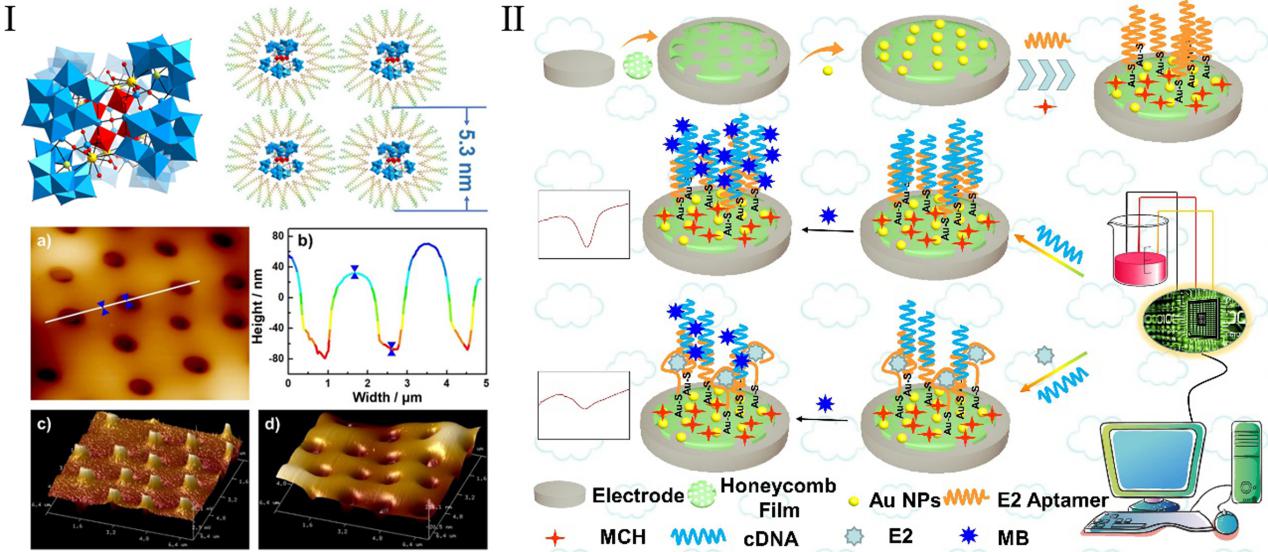
The crystal structure of the octameric 1a anion and the 1@DODA honeycomb film composite; II: The detection mechanism of the 1@DODA biosensor for detection of E2.
Electrochemical biosensors with high sensitivity and fast response are of great significance in bioactive molecule detection, medical care, food industry, environmental detection et al. Polyoxometalates are a group of nanosized metal-oxo clusters consisting of multiple metal centers and have a variety of applications in medicine, magnetism, optics and electrochemistry, which gradually become one of the research hotpots in the field of electrochemical biosensors.
Recently, Zhao’s group synthesized a novel multi-tungsten-bridged praseodymium-incorporated octameric tellurotungstate [H2N(CH3)2]16K8Na6H10[Pr8(H2O)20W16O48][B-α-TeW9O33]8·70H2O (1) in CH3CN−H2O mixed solvent. In this structure, the square {W4O12} cluster can be imagined as a seed to induce the aggregation of eight [B-α-TeW9O33]8– fragments by coordination driving force of additional twelve WVI bridges and eight PrIII ions, constructing a giant core-shell cluster structure. Furthermore, to further explore the application of 1 in electrochemical sensing aspect, a 2D 1@DODA (dimethyldioctadecyl ammonium bromide = DODA·Br) honeycomb composite material was prepared by the breath figure (BF) method, in which the water soluble polyanions of 1 are combined with amphiphilic DODA+ cations via electrostatic interaction. The highly ordered honeycomb morphology at a micrometer scale of the 1@DODA honeycomb composite material provides numerous binding sites for electrodepositing Au nano particles to anchor the hormone 17β-estradiol (E2) aptamer by specific recognition interaction for electrochemical sensing. The successful preparation of 2D 1@DODA honeycomb composite material and the construction of the electrochemical biosensor of 1@DODA for detecting E2 not only offer a novel platform for clinical detection and biological analysis but also expand the application fields of POM-based composite materials. The first author is Yan ZHANG (a Ph.D. candidate) with Henan University as the corresponding institute and Prof. Junwei Zhao is the corresponding author (Nanoscale, 2020, 12, 10842; DOI:10.1039/c9nr10573e).
Link to this paper:
https://pubs.rsc.org/en/content/articlelanding/2020/NR/D0NR01901A#!divAbstract


